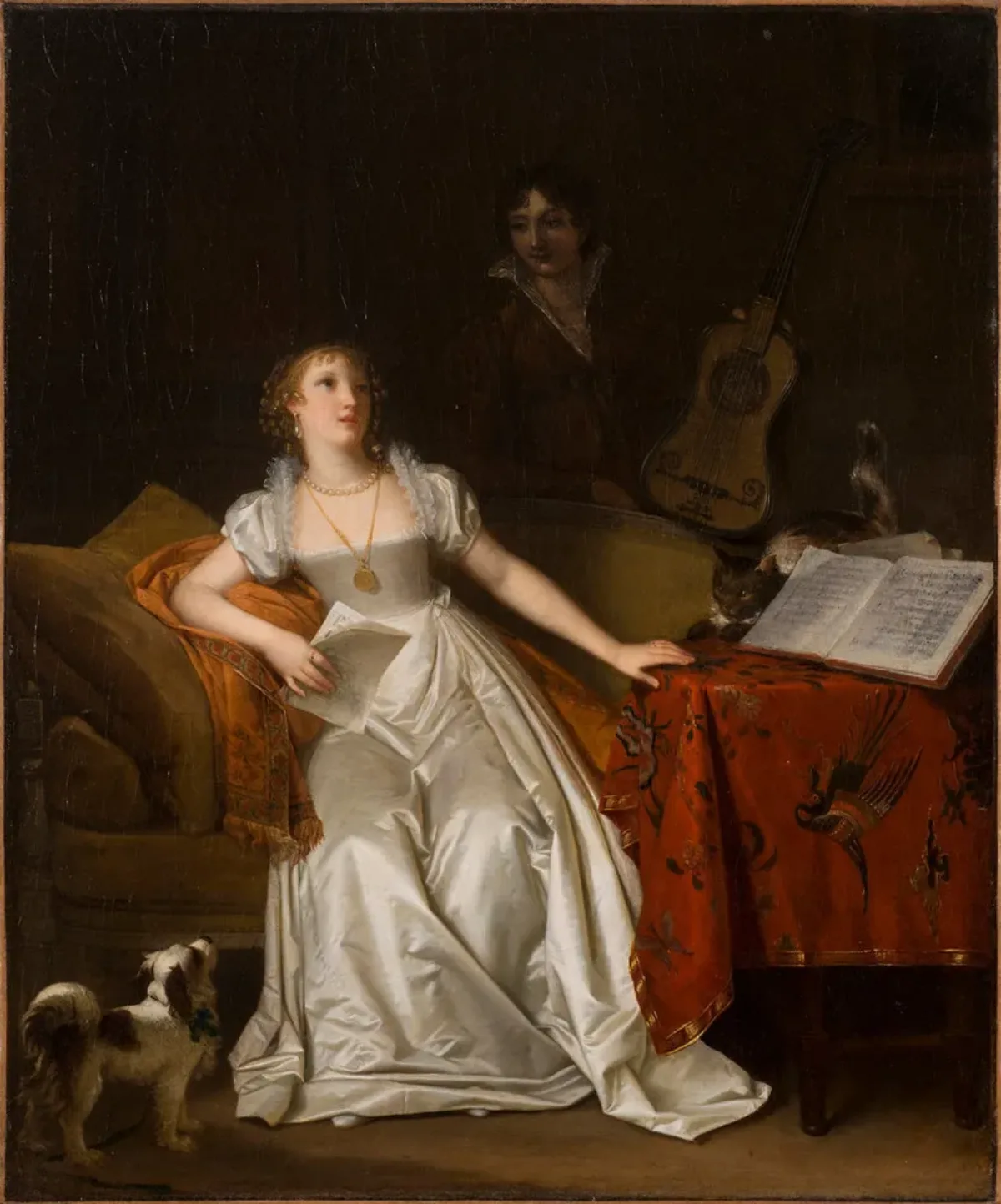Marguerite Gérard
Gérard, who never married and apparently never demonstrated any interest in joining the Academy, had a tremendously successful career. She won three medals for her work, which she exhibited regularly once the Salons were opened to women in the 1790s. Her pictures were acquired by luminaries such as Napoleon and King Louis XVII, and she acquired considerable wealth and real estate.
Her interest in art was shaped by her brother-in-law, the popular Rococo painter Jean-Honoré Fragonard, beginning in 1775, when she moved from Grasse to Paris to live with her sister’s family. As part of the Fragonard household, Gérard had considerable financial freedom, along with the opportunity to further her artistic training as her brother-in-law’s unofficial apprentice.
By her mid-20s, Gérard had developed her signature style, which featured painstakingly accurate details rendered with subtly blended brush strokes, both traits borrowed from 17th-century Dutch genre specialists, notably Gabriel Metsu. Gérard’s work is technically impressive but also practical: these relatively small-scale, portable canvases appealed to wealthy collectors who preferred to display in their homes meticulously painted still lifes and genre scenes rather than large history paintings. The numerous engraved versions of Gérard’s paintings made them accessible to less affluent art lovers and helped increase her reputation.
